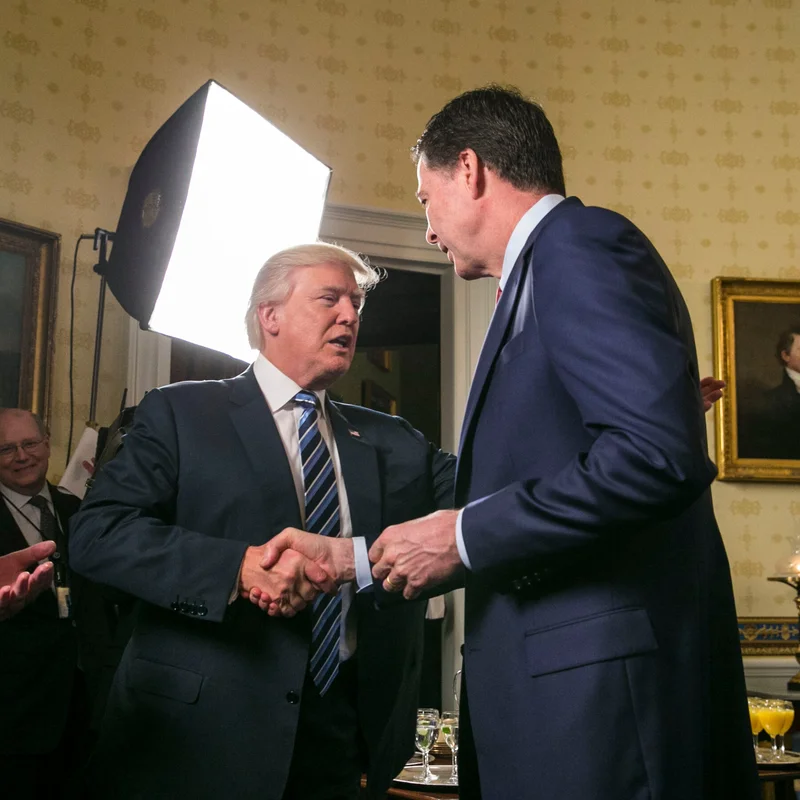The indictment of former FBI Director James B. Comey in September 2025 marks the latest—and most legally consequential—chapter in his long, turbulent relationship with President Donald Trump. Once a top law enforcement official, Comey has become a symbol of the deepening divide between political power and institutional independence in America. Below is a detailed, infographic-rich breakdown of their fraught history, updated with 2025 developments.
Why This Timeline Matters
From campaign controversies to courtroom drama, the Trump-Comey saga reflects broader concerns about political interference in the Justice Department, the weaponization of legal tools, and the erosion of norms in American governance. With Comey now formally charged, understanding this timeline is essential for voters, legal observers, and historians alike.
⚖️ Key Context: The September 2025 indictment—signed by Trump-appointed U.S. Attorney Lindsey Halligan—accuses Comey of lying to Congress in 2020. Critics call it politically motivated; Trump allies hail it as long-overdue accountability.
Complete Trump-Comey Timeline (2016–2025)
2016: The Clinton Email Controversy
- July 2016: Comey recommends no criminal charges for Hillary Clinton over her use of a private email server. Trump calls the system “rigged.”
- October 28, 2016: Days before the election, Comey announces the FBI is reviewing newly discovered emails related to Clinton—reigniting public scrutiny and drawing bipartisan criticism.
2017: The Russia Investigation and Firing
- March 20, 2017: Comey confirms the FBI is investigating possible collusion between the Trump campaign and Russia.
- May 9, 2017: Trump abruptly fires Comey, citing “loss of confidence” in his leadership. The White House later claims the Russia probe was a factor.
- June 2017: Comey testifies before the Senate Intelligence Committee, stating Trump asked him to “let go” of the investigation into Michael Flynn.
2018–2020: Aftermath and Memoir
- April 2018: Comey publishes A Higher Loyalty, calling Trump “unethical” and “untethered to truth.”
- September 2020: Comey testifies before the Senate Judiciary Committee about FBI leaks. This testimony becomes the basis for his 2025 indictment.
2025: The Indictment
- September 2025: U.S. Attorney Lindsey Halligan indicts Comey on one count of false statement and one count of obstruction of a congressional proceeding—based on his 2020 testimony.
- The indictment is only two pages long and contains no specific evidence, prompting bipartisan legal criticism.
- Former U.S. Attorney Preet Bharara calls the case “likely to end in spectacular failure.” Law professor Richard Painter warns: “This is what prosecutors do in dictatorships.”
Key Players in the Comey Case
| Figure | Role | Stance on Indictment |
|---|---|---|
| James Comey | Former FBI Director | “I’m innocent. Let’s have a trial.” |
| Lindsey Halligan | U.S. Attorney (Trump appointee) | Filed the indictment; replaced prior prosecutor |
| Erik S. Siebert | Former U.S. Attorney | Found insufficient evidence; removed from case |
| Sen. Chuck Grassley | Chair, Senate Judiciary Committee | “Qualified support”—wants evidence to back claims |
| Rep. Don Bacon | Republican (NE) | Warns of “lawfare undermining our country” |
What Is “Lawfare”?
Lawfare refers to the strategic use of legal systems to harass, delegitimize, or punish political opponents. Critics argue the Comey indictment fits this pattern due to:
- The abrupt replacement of the original prosecutor
- Lack of evidentiary detail in charging documents
- President Trump’s years-long public campaign against Comey
🔍 Flowchart: How the Comey Indictment Unfolded
- Trump demands prosecution of Comey (2021–2025)
- Original U.S. Attorney Erik Siebert finds no case
- Siebert is removed by Trump administration
- Lindsey Halligan appointed (Sept 2025)
- Two-page indictment filed within days
- Nationwide legal and political backlash ensues
For a deeper look at how presidential influence affects federal prosecutions, see our analysis: [INTERNAL_LINK:presidential-power-and-justice-department-independence].
For official legal standards on prosecuting false statements to Congress, refer to the U.S. Department of Justice’s U.S. Attorneys’ Manual.
Sources
- https://www.nytimes.com/2025/09/26/us/trump-comey-relationship-timeline.html
- https://www.nytimes.com/2025/09/26/us/politics/comey-indictment-legal-reaction.html
- https://www.justice.gov/usam
- https://www.lawfareblog.com/
- https://www.brennancenter.org/our-work/research-reports/politicization-justice-department




